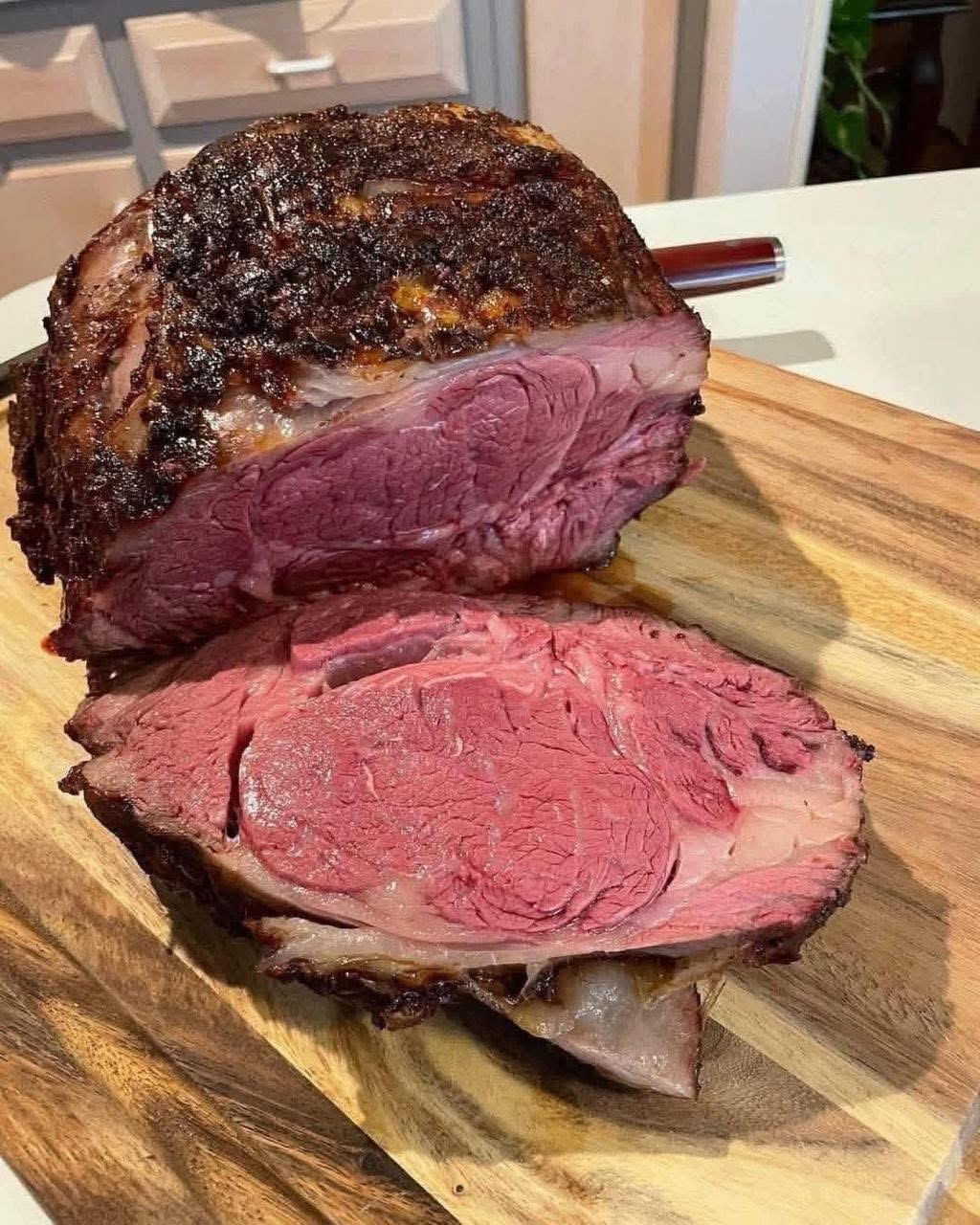When it comes to unforgettable dinners and holiday gatherings, few dishes deliver the same level of flavor and wow-factor as a perfectly cooked Prime Rib Roast. Juicy, tender, and beautifully marbled, prime rib is one of those meals that turns an ordinary evening into a celebration. Whether you’re preparing it for Christmas, a family feast, or a special weekend treat, mastering this iconic cut is much easier than most people think. With the right seasonings, the correct temperature, and a little patience, you’ll create a roast that melts in your mouth and fills the entire kitchen with an irresistible aroma.
In this article, we’ll walk through everything—from selecting the right cut to seasoning, roasting, resting, slicing, and serving. By the time you’re done reading, you’ll feel fully equipped to make a restaurant-quality prime rib right at home.
Choosing the Best Cut of Prime Rib
The secret to an amazing prime rib begins at the butcher’s counter. A standing rib roast is taken from the rib section of the cow, known for its rich marbling and unbeatable tenderness. Here’s what to look for when choosing yours:
- Bone-in vs. Boneless: Bone-in roasts provide more flavor and insulation, helping the meat cook evenly. Boneless roasts are easier to carve. Both work well, but many chefs prefer bone-in.
- Marbling: Look for visible streaks of fat running through the meat. More marbling means more flavor and tenderness.
- Size: A good rule is about 1 pound per person. If you’re serving a big crowd, you can adjust as needed.
- USDA Grade: Prime is the highest quality, but Choice also delivers excellent results and is more affordable.
Seasoning: Keep It Simple but Flavorful
Prime rib is naturally rich and delicious, so it doesn’t need complicated seasoning. In fact, most traditional recipes rely on basic ingredients that enhance the meat without overpowering it.
A classic seasoning blend includes:
- Salt
- Black pepper
- Garlic (fresh or powdered)
- Fresh herbs like rosemary or thyme
- Softened butter or olive oil
You can also add onion powder, smoked paprika, or a touch of mustard for depth. Rub the seasoning generously on all sides of the roast, and if possible, let it sit in the refrigerator uncovered overnight. This helps dry the exterior slightly, creating a beautiful crust during roasting.
How to Cook a Perfect Prime Rib Roast
The cooking process is simple, but the temperature and timing are crucial. Follow these steps for tender, juicy results every time.
1. Let the Roast Come to Room Temperature
Allow the roast to sit out for 2 hours before cooking. This ensures even roasting and prevents the outside from overcooking while the inside stays cold.
2. Preheat the Oven
Set the oven to 450°F (230°C) to help create a flavorful crust at the beginning.
3. Start with High Heat
Place your prime rib in a roasting pan, fat side up. Roast it at 450°F for 20–30 minutes to lock in juices and develop a golden crust.
4. Lower the Temperature
Reduce the oven to 325°F (165°C) and continue roasting until your desired doneness:
- Rare: 120°F (49°C)
- Medium-rare: 130°F (54°C)
- Medium: 140°F (60°C)
- Medium-well: 150°F (65°C)
Most people prefer medium-rare for maximum tenderness and flavor.
5. Rest Before Slicing
This step is non-negotiable. Let the roast rest for 20–30 minutes after removing it from the oven. Resting allows the juices to redistribute, keeping the meat moist rather than spilling onto the cutting board.
Serving Your Prime Rib Roast
Once rested, slice the roast into thick, generous cuts. Each slice should reveal a juicy pink center with a browned, flavorful crust. Pair your roast with classic sides to make the meal complete:
- Mashed potatoes or garlic butter potatoes
- Roasted vegetables
- Creamed spinach
- Yorkshire pudding
- Fresh salad
- Horseradish sauce or au jus
The richness of prime rib pairs beautifully with bold flavors and hearty textures, making every bite memorable.
Tips for Extra Flavor
If you want to elevate the dish even further, here are a few pro tips:
- Reverse sear option: Cook low and slow first, then finish with a blast of heat for a crisp crust.
- Garlic butter baste: Spread garlic herb butter on the roast 30 minutes before it finishes cooking.
- Use a thermometer: This is the only way to guarantee perfect doneness.
- Save the drippings: They make incredible au jus.
Storing and Reheating Leftover Prime Rib
Prime rib reheats beautifully when done correctly. Avoid the microwave because it tends to dry the meat.
Instead, do this:
- Wrap slices in foil with a splash of beef broth.
- Warm in the oven at 250°F (120°C) for 10–15 minutes.
Leftovers are delicious in sandwiches, wraps, salads, or even breakfast hash.
Final Thoughts
A perfectly cooked prime rib roast doesn’t require complicated techniques. With quality meat, simple seasonings, proper temperature control, and patience, you can produce a show-stopping main course that rivals high-end steakhouses. Whether you’re cooking for loved ones or treating yourself, this dish guarantees satisfaction from the very first bite. So go ahead—prepare your roast, gather your favorite sides, and enjoy a luxurious homemade dinner that everyone will remember.
